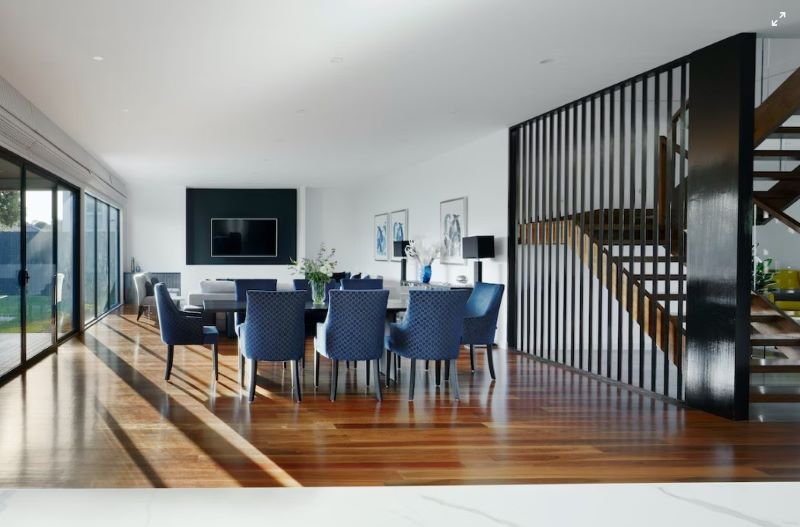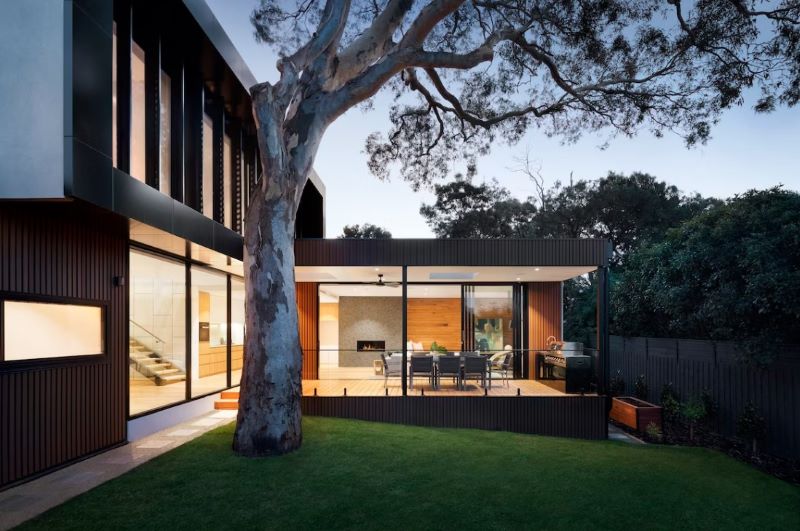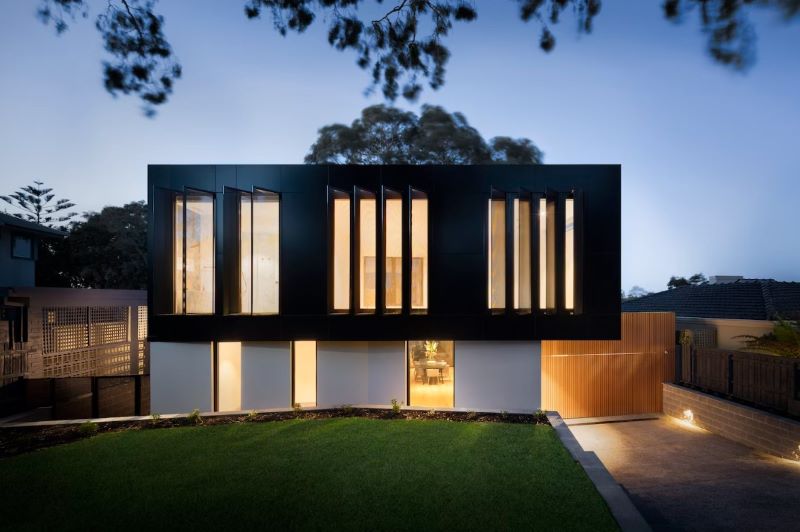Achieving a Modern Look: Blending Architecture with Trends
Creating a modern home goes beyond mere decoration; it’s a harmonious blend of architecture, design, and trending aesthetics. Achieving that contemporary feel is more than just integrating current styles—it’s about weaving those elements seamlessly into the architectural fabric of your home. The result is a living space that feels fresh, innovative, and timeless.
In this article, we’ll embark on a journey to explore how you can mesh architecture and trends to give your home a modern aesthetic. We’ll delve into the importance of coherence in design, how to choose and integrate trends without losing the architectural essence, and how to balance the fine line between stylish and timeless. You’ll gain insights into navigating design choices, material selections, and color palettes that not only resonate with your personal style but also stay true to your home’s architectural integrity.
So, if you’re excited to give your home that sleek, modern edge or planning a home renovation with a contemporary flair, this guide is for you. Let’s dive in and unravel the art of blending architecture with modern design trends.
Understanding Modern Design Principles
Embracing modern design requires an understanding of its core principles. This design style, rooted in the simplicity of form and function, is about decluttering spaces and implementing clean lines, geometric shapes, and minimal ornamentation. However, as straightforward as it might sound, integrating modern design into your home involves making thoughtful choices that significantly influence the aesthetics of your space.
One of the key tenets of modern design is the emphasis on form follows function. The functionality of the design should inform the shape and structure of your space, rather than mere decorative appeal. This principle encourages the design to be streamlined and efficient, eliminating unnecessary elements and focusing on the usability of the space.
Another aspect that defines modern design is open spaces and natural light. Large, unobstructed windows, open floor plans, and the use of reflective surfaces help flood spaces with natural light, enhancing the room’s openness and overall vibe. The importance of nature extends to the choice of materials as well, with modern design favoring natural materials like wood and leather, often juxtaposed with industrial elements like steel and glass.
Color also plays a significant role in modern aesthetics. Neutrals, whites, and earth tones are commonly used, with color often introduced through accents or artwork. The modern color palette is all about balance and harmony, adding visual interest while maintaining the clean and simplistic approach that defines modern design.
Ultimately, achieving a modern aesthetic involves making design choices that adhere to these principles, harmoniously combining form, function, light, and material. When well-executed, these elements can dramatically transform a space, lending it a serene, expansive, and distinctively contemporary feel.
Harmonizing Internal and External Elements
The power of modern design lies in its ability to seamlessly unify the indoor and outdoor elements of a home. It’s about cultivating a sense of coherence, where the interior aesthetic extends beyond the physical boundaries of the house to merge with the external environment.
A prominent aspect of establishing this indoor-outdoor cohesion is your home’s entranceway. The door, as the transition point between the external world and your internal space, sets the tone for your home’s design narrative. Whether you opt for a minimalist design with clean lines or a bold, statement-making style, it’s essential that your choice resonates with the interior design and exterior façade.
In this context, composite front doors have emerged as a preferred choice in modern architectural design. These doors, composed of a blend of materials like wood, PVC, and insulating foam, strike a perfect balance between aesthetics, functionality, and environmental sustainability.
Further, consider other exterior elements like pathways, garden layout, lighting, and outdoor furniture. These aspects should not only serve their practical purposes but also extend your interior style to your home’s surroundings, creating a visually pleasing continuity.
Internally, elements like furniture, color schemes, textures, and lighting should be chosen to complement the external view. For example, a room overlooking a lush garden could incorporate shades of green or botanical patterns to visually connect the indoor and outdoor spaces.
By considering your home as a whole rather than a series of separate spaces, you can create a harmonious and unified design that enhances the overall aesthetic and experiential quality of your home.
Bringing Life to Your Walls
Our walls serve as the canvas of our homes, significantly influencing the overall atmosphere and ambiance. By strategically designing these canvases, we can shape the energy and mood of our living spaces.
Color is one of the most potent tools in wall aesthetics. It can evoke emotions, stimulate senses, and set the mood for the entire space. For instance, cool hues like blues and greens often instill a sense of calm and tranquility, making them ideal for bedrooms or study spaces. On the other hand, warm colors like reds and oranges can create a vibrant and energetic vibe, suitable for social spaces like the living room or kitchen.
Beyond color, there’s a myriad of options to add depth and character to your walls. For example, textured finishes, such as plaster, stucco, or beadboard, can add a tactile dimension to your spaces, making them feel more dynamic and layered. Additionally, wall decor, such as artwork, mural wallpaper, mirrors, or wall hangings, can be used to express personal style, introduce visual interest, or even serve as conversation starters.
Moreover, incorporating architectural elements like built-in shelves or fireplaces can also transform walls into functional features, combining aesthetics with practicality.
Design Choices and Their Impact on Home Value
The architecture and design of a residence can significantly impact its real estate valuation, making each aesthetic choice a vital component of owning a home. It’s more than just constructing attractive environments; it’s about making calculated decisions that may yield financial benefits down the line.
Contemporary design, with its emphasis on practicality, minimalism, and balance, often attracts prospective homeowners. Spacious, open floor plans, for instance, can generate a sense of expanse and versatility—qualities greatly favored in the current property market. Likewise, ample natural illumination, a hallmark of contemporary architecture, can instill a sense of warmth and vitality in a home, augmenting its appeal to potential purchasers.
Moreover, certain design specifics can also influence a home’s perceived worth. For instance, a state-of-the-art kitchen equipped with the latest appliances can demand a higher price in the market. Similarly, updated washrooms featuring modern fittings can lead to a boost in property valuation.
It’s also crucial to note that some design elements could impact long-term upkeep costs, a factor that astute buyers might consider in their decision-making process. For example, materials and finishes of superior quality, though they might require a larger initial investment, could offer greater durability and ease of maintenance, making them more desirable to prospective buyers.
These home improvements can be seen as an investment. Similar to how the value of a financial asset can grow exponentially over time due to the reinvestment of earnings, strategic investments in your home’s design can lead to increased value over time. This concept mirrors the understanding of compound growth in financial investments and showcases how thoughtful design choices can act as investments contributing to the long-term financial growth of your property.
In Conclusion: Merging Design Elements for a Harmonious Modern Home
Our journey has spanned the essential principles underpinning modern aesthetics, the significance of uniting internal and external features, the powerful role of wall treatments in shaping the ambiance of our homes, and finally, the implications of our design decisions on property values.
In conclusion, the crafting of a stylish, contemporary home goes beyond merely adhering to popular trends. It necessitates a deep understanding of modern design fundamentals, strategic blending of diverse design components, and informed decision-making that bolsters not just our homes’ visual allure, but their functionality, harmony, and potential financial gains.
This comprehensive approach to home design can guide us in creating spaces that are more than just pleasing to the eye – they are practical, balanced, and potentially profitable from a financial standpoint.










